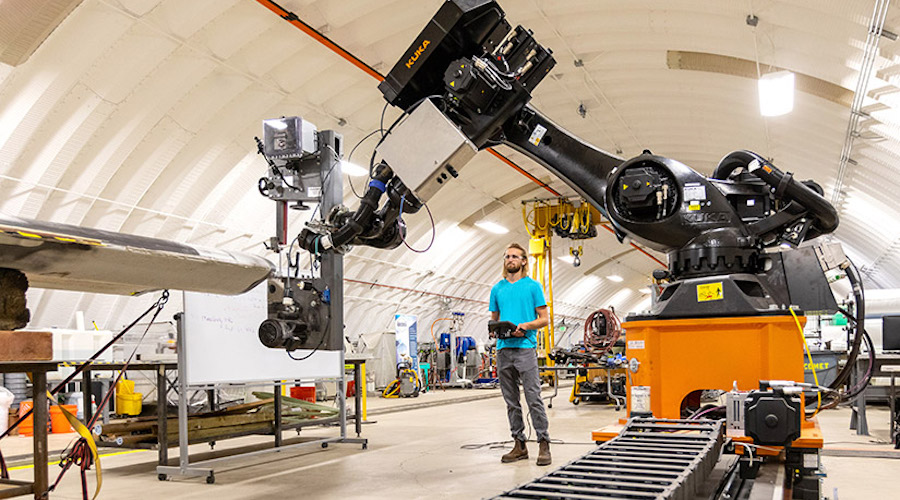
Researchers at the US Department of Energy’s National Renewable Energy Laboratory (NREL) have successfully leveraged robotic assistance in the manufacture of wind turbine blades, allowing for the elimination of difficult working conditions for humans and the potential to improve the consistency of the product.
In a paper published in the journal Wind Energy, the researchers explain that the post-moulding operations to manufacture wind turbine blades require workers to perch on scaffolding and wear protective suits including respiratory gear. Automation, thus, will boost employee safety and well-being and help manufacturers retain skilled labour.
“The motive of this research was to develop automation methods that could be used to make domestically manufactured blades cost competitive globally,” Hunter Huth, lead author of the article, said in a media statement.
“Currently offshore blades are not produced in the US due to high labor rates. The finishing process is very labour-intensive and has a high job turnover rate due to the harsh nature of the work. By automating the finishing process, domestic offshore blade manufacturing can become more economically viable.”
The research was conducted at the Composites Manufacturing Education and Technology (CoMET) facility at NREL’s Flatirons Campus. The robot worked on a 5-meter-long blade segment. Wind turbine blades are considerably longer, but because they bend and deflect under their own weight, a robot would have to be programmed to work on the bigger blades section by section.
The researchers used a series of scans to create a 3D representation of the position of the blade and to identify precisely the front and rear sections of the airfoil—a special shape of the blade that helps the air flow smoothly over the blade. From there, the team programmed the robot to perform a series of tasks, after which it was judged on accuracy and speed. They then found areas for improvement, particularly when it came to grinding. The robot ground down too much in some parts of the blade and not enough in others.
“As we’ve gone through this research, we’ve been moving the goalposts for what this system needs to do to be effective,” Huth said.
According to the scientist, once perfected, an automated system would provide consistency in blade manufacturing which is not possible when humans are doing all the work. He also said a robot would be able to use “tougher, more aggressive abrasives” than a human could tolerate.